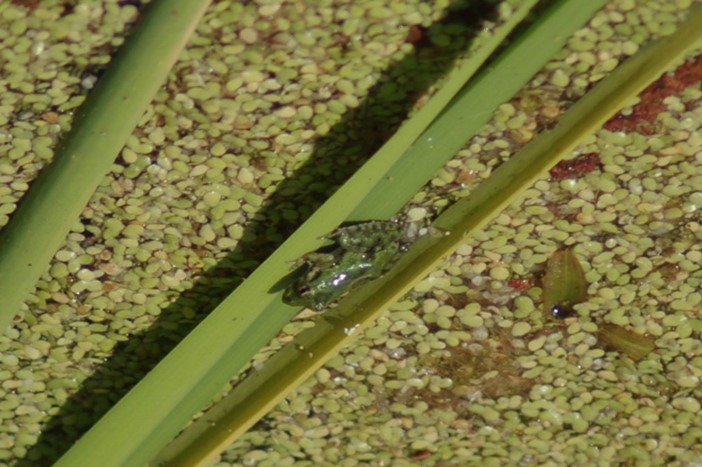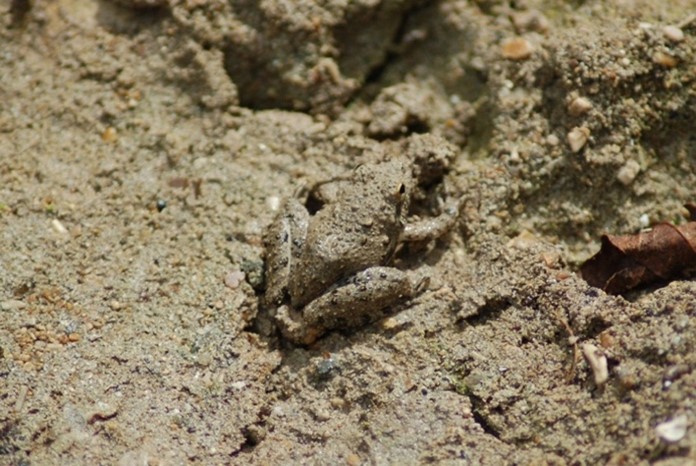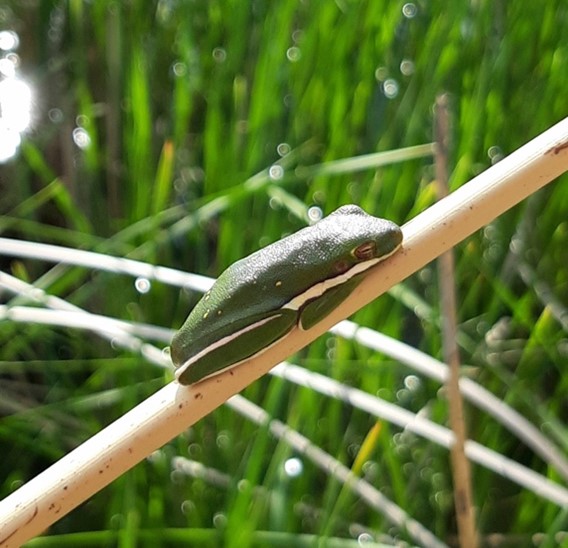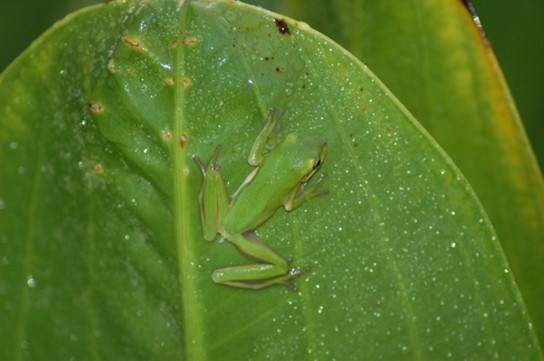Amphibians are cold-blooded animals that have an aquatic gill-breathing larval stage followed by a terrestrial lung-breathing adult stage. Frogs and toads are in this class. Nature provides some vulnerable animals the capability to blend into their surroundings. This protection is called camouflage.
For more information go to:
http://www.inaturalist.org/projects/spring-creek-forest-preserve-garland-tx
OR
http://www.inaturalist.org/observations?project_id=61345
Enter Species: amphibian
Enter Location: spring-creek-forest-preserve-garland-tx <return>
Frogs
Frogs have long hind legs to allow them to jump, their skin is smooth and “slimy” since they are in or near water. They lay eggs in a cluster.
Blanchard’s cricket frog, Acris crepitans blanchardi, is .6” and most commonly found in wetlands, ponds and slow moving streams. They eat insects and rarely live more than 1 year. No doubt their camouflage prolongs their life.
Blanchard’s Cricket Frog

Blanchard’s Cricket Frog – Camouflage mode

The Green Tree frog, Hyla cineria, is 1.25”-2.25” is arboreal and nocturnal This frog eats insects found in trees. Their sticky toe pads aid them in climbing and jumping. Mammals, reptiles, fish and birds all eat this frog. Another example of the benefits of camouflage.
Green Tree Frog

Green Tree Frog – Camouflaged

